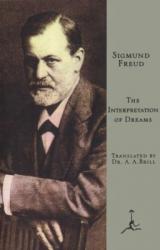Years ago, I tried picking up this book and reading it so I could become
educated about dreams and their interpretations. Back then, I lost interest
within the first hundred pages. This time, as I prepare to write my own
fictional series of books about dreams and the parallel world they inhabit, I
was much more focused and able to finish this daunting book. While many will
say what they will about Freud and his theories, this book was the definitive
and groundbreaking work that helped us all understand a little more of what
influences our dreams.
Written mostly as an academic examination of the influencing factors of
dreams, Freud includes a plentitude of examples from his patients and his own
life to help prove his point. This can be a little tedious at times, as it
feels like he’s banging the reader over the head with multiple examples
that don’t add much to the explanation. Of course, Freud does go on to
reference these examples in later sections of the book, which is why they are
so heavily weighted toward the front of the text.
While this book isn’t meant to be used as a reference to understand the
direct meanings of specific dream elements, it does provide some thoughtful
reasoning behind some of the most common ones like falling, appearing naked
in public, and the “school dream.” That being said, the more I read, the
more I realized we truly know nothing about dreams. Analysts have to rely on
the fallible memory of the dreamer, and Freud often tries to explain away
inconsistencies by “reversing” the dream’s symbolism. I also found
Freud’s penchant to regularly resort to sexual meanings behind dreams seems
to be a case of “if you have a hammer/phallus, every problem is a
nail/phallus.”
A proper examination of the basics of dream interpretation, I give The
Interpretation of Dreams 3.5 stars out of 5.
